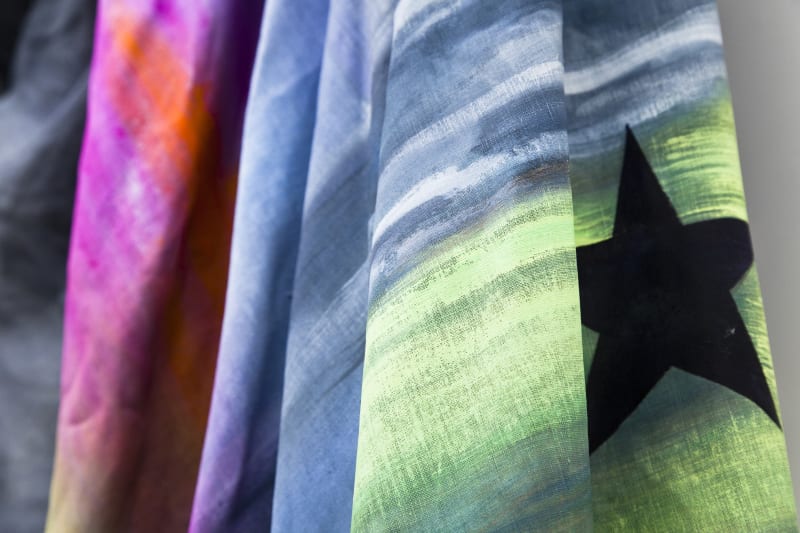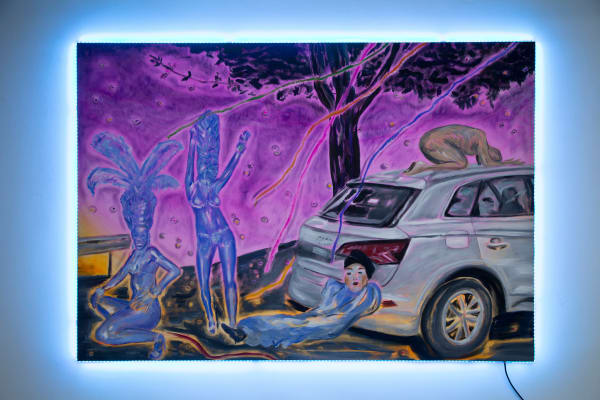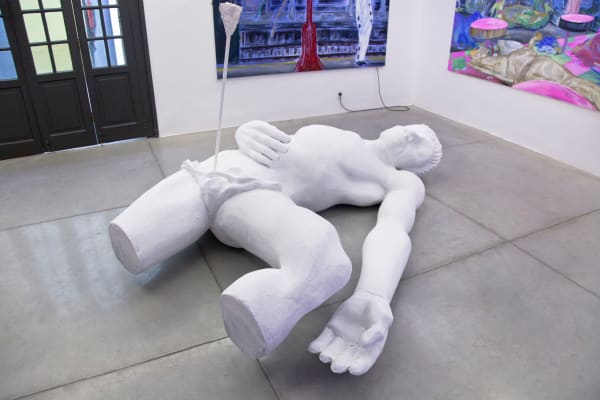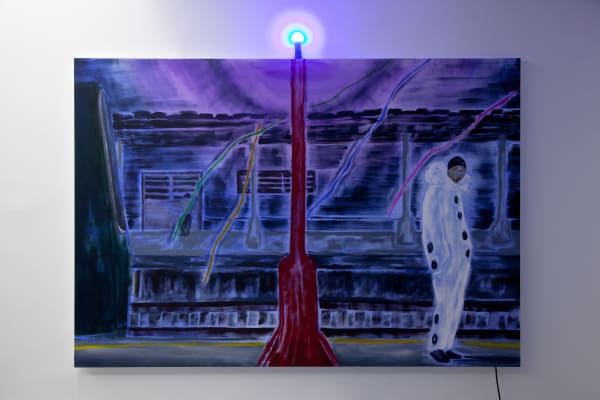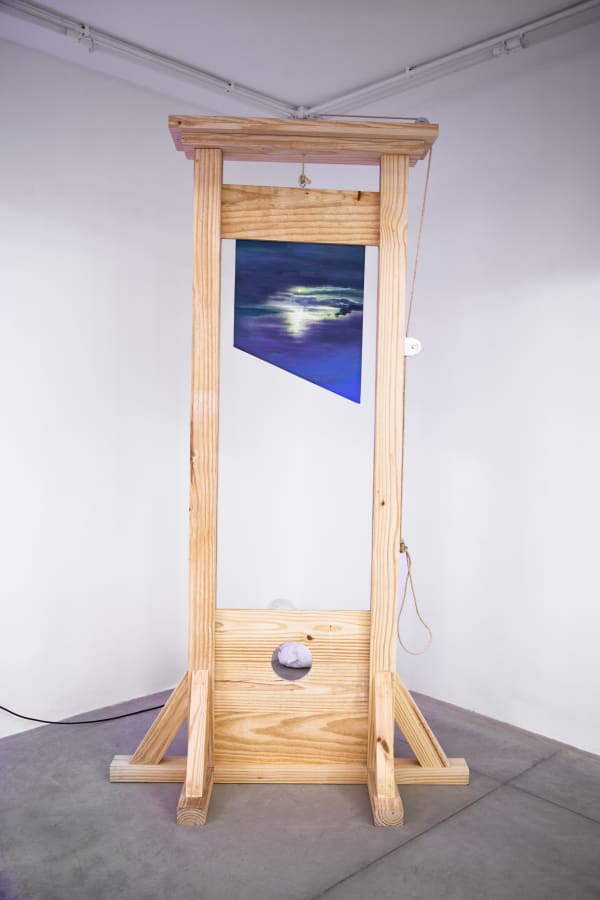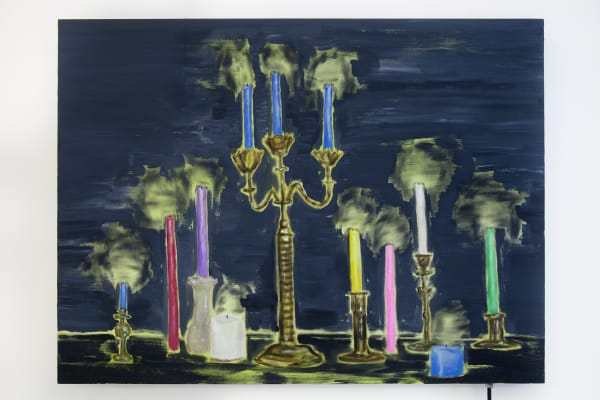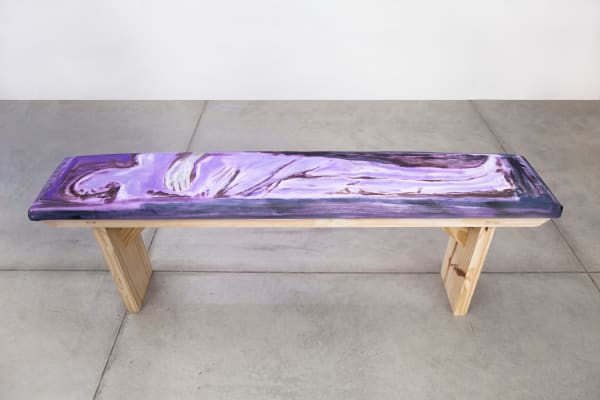Andrew Silva: Ramal Apoteose
The city is a disputed territory, and carnival is a form of combat between the body and death; a sacrificial rite of the reencounter between the individual and the possibility of life, as a collective experience of the reconstruction of being on the street and in the world. This is what comes to mind when faced with the sacred-profane creations (since it is the nature of street cultures to desecrate the sacred and sacralize the profane) of Rio-born artist Andrew Silva, from Bangú, in the exhibition Apotheosis Branch (Ramal Apoteose).
The city, often a disenchanted, hostile landscape, is presented in the artist’s work as something that has transgressed into a terreiro (a place of worship in Afro-Brazilian religion), a space rich in the enchantment of the world. The masked bodies that move to and fro, dance samba, turn delirious, and beat bass drums and tambours, reinvent life amidst the aridity of avenues and viaducts and lights, smoke and car horns.
There is, in the poetic dimension of Andrew's work, a political perspective present in the very history of the city, its suburbs and its carnivals. I gaze at the canvases and can perceive the layers of a struggle for the streets that courses through the history of Rio de Janeiro. In the 19th century, it took the form of an attempt to impose a European model of carnival, borrowing the parade structure of the Great Societies, which would take over from the popular festivals of cucumbis, blocos and cordões (forms of carnival street party).
At the beginning of the 20th century, hygienist planners imagined the center of Rio as a kind of Paris of the Tropics, mostly expelling its poor, black residents, who climbed up into the hills or followed the train tracks into the suburbs. In the wake of this clash, it was precisely those who had scaled the hills and occupied the suburbs who would construct the foundations of the city's popular culture.
Today in the 21st century we have a similar conflict. There are those who take an aseptic, hygienist view of the city, rooted in castrating moralities of what we are capable of being. And there is the city that reinvents itself in the gaps between the postcards, in its streets and branch lines, in the bodies of the dancers and in the wild costumes of the bate-bola (a form of carnival) revellers, arguing for the festival as a ritual and collective example of transgression scarce in art.
Popular culture in Rio de Janeiro is essentially a ritual. The styrofoam arrow on the chest of the patron of a samba school can be a gunshot, a spear, confetti, a streamer, a balloon, a parasol, or a drumstick for a snare or bass drum. In the hands of Andrew Silva, it's like a tram car that travels from what we were to what we are, and what we can be. It wasn’t the street, after all, that invented carnival. It was carnival that invented the street, sacred, dirty, profane, as an apotheosis of joy and prayer.
Luiz Antônio Simas
